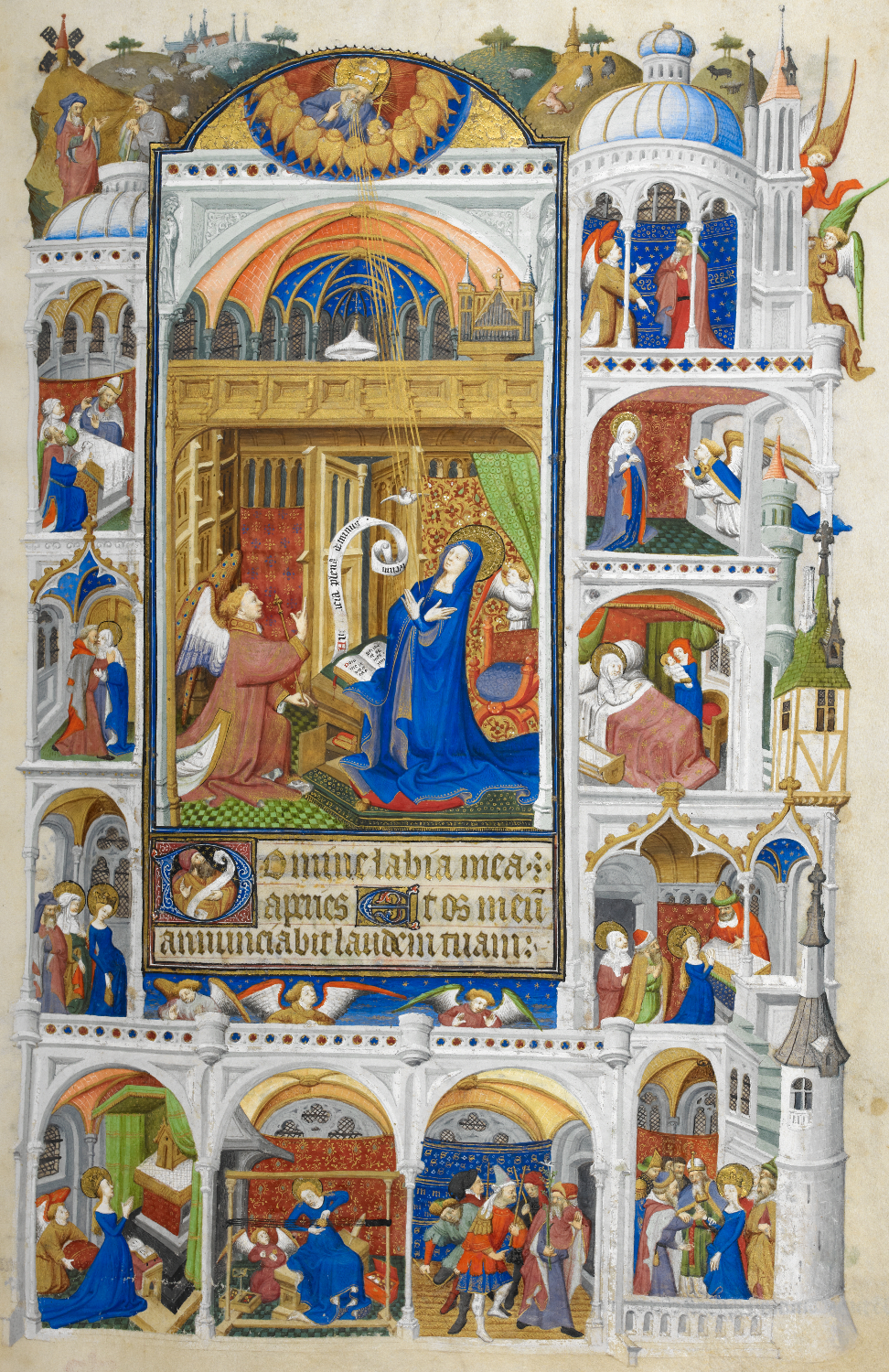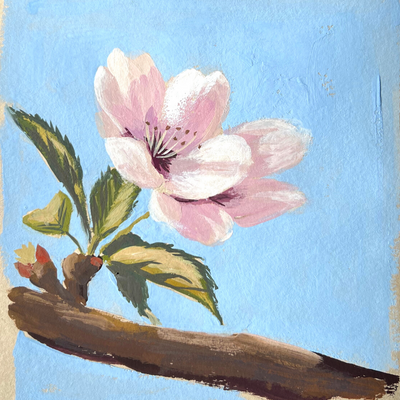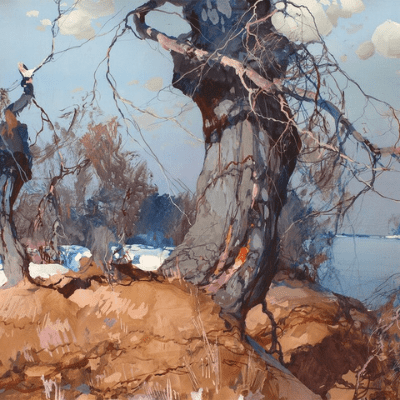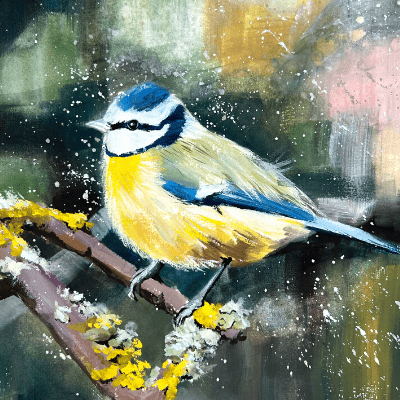Gouache history
Gouache is a water-based paint made from powdered pigment, liquid (usually water), and a binder such as gum arabic or dextrin. People have been using gouache for as long as they could paint. Let’s see a bit of gouache history.
What is gouache
The word ‘gouache’ comes from the Italian word ‘guazzo,’ meaning ‘very wet. In 1746 the French word ‘gouache’ was used in France to replace ‘painting a guazzo’. Whatever the term, gouache painting is a part of wet painting techniques that can be split into three categories, depending on the binding:
- with egg, like tempera
- with glue
- with gum (Arabic gum mainly, or any other sticky binder) which includes watercolor and gouache.
The main difference between gouache and watercolor is the opacity; a filler is added to the gouache mix to give the paint its opacity. Water-based paints with gum are the most ancient painting technique, found in several cultures as early as 5000 BC.
Prehistoric times
As far as 40 000 BC, prehistoric people used pigments to decorate caves. To make the color adhere to a surface, ground ocher powder is mixed with a binder (animal fat or saliva). People applied the mix by using various techniques: projecting it onto the wall by spitting out material; dabbing it onto the surface. This could be the first use of the wet painting technique, which is still visible today. Besides paintings on the cave walls, they used ground pigments with a binder to decorate tools, tanning leather, and body painting.

Antiquity
The Egyptians used it for decoration and burial purposes, while the Greeks and Romans used it to paint their frescoes on walls. Laboratory analyses of Egyptian paintings have revealed the presence of acacia gum and vegetable juices in many works, whether in decoration or illustration.
Pliny the Elder mentions the preparation and use of colors based on gum, glue, or resin. Artists used Sarcocola gum the most, a transparent and water-soluble resin that exudes from Penola Sarcocola shrubs native to North Africa.
Famous funeral mummy portraits of the Fayum were painted with a mix of pigments, gelatin, egg, resin, or gum. The Fayum portraits are the oldest ones found, from the late 1st century BC to the 3rd century. When you look closely, the level of detail and realism is incredible!

Byzantine Tradition
Although the evidence is incomplete, scholars have traced the development of Christian iconography from Fayum portrait painting. The gum distemper process continued in Byzantium in the art of icons and illustrated gospel books.
Middle Age Illuminated Manuscripts
For illuminated manuscripts, monks used mainly gum-based colors, either on paper or leather. They mixed most colors with gum water—gum arabic or tragacanth—except for a few, such as saffron and cinnabar, ground with egg white. They applied gold leaf to the colors to ‘illuminate’ the manuscript.

Renaissance
Though less prevalent than in the past, gum distemper processes still survive. Gum distemper dyes have their most frequent applications in the genre of miniature and especially portraiture. A miniature is a small painting, usually done on wood or ivory, and can also be found on paper. Gouache is also used as a sketching process and finds particular use in the field of illustration—especially natural history, zoology, and botany.
In the 15th century, it developed as a complement; it brings a “highlight” of light to the countless Florentine drawings of this period, particularly to the drawings on tinted paper (which thus ensures a “half-light”).
XVIII° century
However, gouache became a fully developed genre in its own right in the 18th century. Its versatility, its ability to produce thick textures and impasto effects similar to those of oil paints, has made gouache a favored medium for many artists. You can find an article with famous gouache painters here.
From Romanticism to Fauvism
The illustrative and artistic vocation of gouache continued into the following century, in works in diverse styles: realist with Daumier, pre-Raphaelite with Edward Burnes Jones, and Symbolist with Odilon Redon. The first significant period of gouache in the 19th century came with Romanticism. The Impressionists adapted the medium to their style, using it for landscapes by artists such as Alfred Sisley and Gustave Caillebotte. Later, Fauvism used gouache’s versatility to create lively scenes featuring strong colors and bold brushstrokes.

Paint tubes
Before the 19th century, painters prepared their paint mixtures, and they had their recipes for making these colors. In 1841 the American painter John Goffe Rand invented the metal paint tube, hermetically sealed with a clip. This concept is taken up and marketed in France by Lefranc, which improves the principle of the screw cap. The company still exists in France and produces quality paint for artists, now Lefranc & Bourgeois.
From now on, color merchants assume the manufacture of paint and offer new products. The compact tubes they sell can be taken anywhere by painters working outdoors to capture an atmosphere or translate the light of a landscape—allowing them to work without being confined to their studios. Tubes were sold with oil paint but also gouache paint.
XX° century
Gouache no longer seems to interest artists and illustrators, who relegate it to the field of study. Kandinsky, Georges Braque, Pablo Picasso, Raoul Dufy… are aware of it but rarely use it as a fully-fledged technique. Gouache was reduced to an auxiliary practice for ink or pencil and essentially used as such.
However, Matisse has revolutionized its use. One artist, who wanted to paint his pictures in living color but could not do so with conventional paints and tools, decided that he would achieve the effect of a modern painting by cutting colored papers and gluing them onto other pieces using gouache. This allowed him not only to invent a way of painting for himself (which no one had done before) but also brought gouache into modern art.
Later, gouache was used for animation purposes, paint on celluloid, and commercial posters. A more commercial paint was designed: poster paint.
Today
Gouache still suffers from being a minor genre, relegated to studies and commercial posters. It’s heavily used by children at school and thus is considered ‘childish.’ But contemporary painters are now using gouache as a medium by itself, painting portraits, landscapes, abstract art, going Plein air… enjoying it as a complete medium.






